PROPER DUMBBELL PRESS FORM: 7 MISTAKES TO AVOID
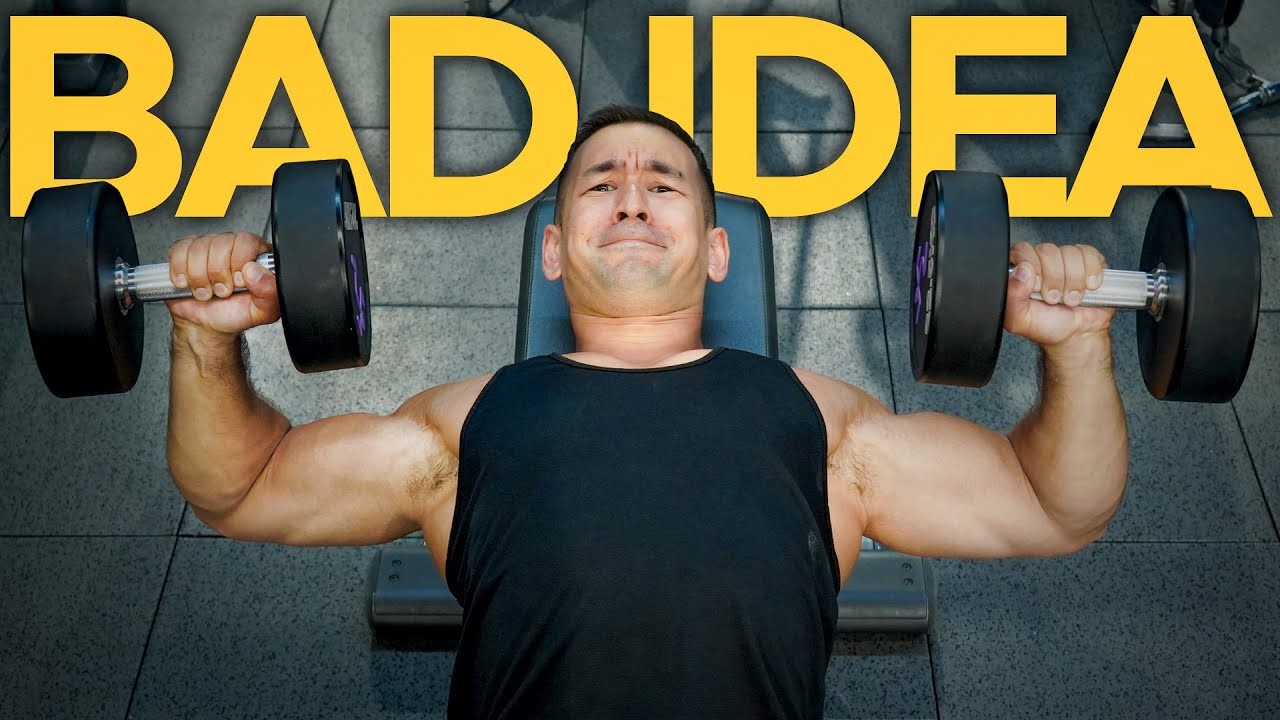
Are you making common mistakes with your dumbbell press form?
Dumbbell presses. Probably one of the best movements for overall chest growth. They’re also a great alternative to the standard barbell bench press.
However, a lot can go wrong when performing dumbbell presses in your workouts.
In this article, we’ll go over 7 common dumbbell pressing mistakes you should avoid.
Whether it’s because these mistakes reduce the overall stimulus on your chest, or increase your risk of injury, read on if you’re interested in improving your own pressing.
Before we begin: a note on pressing movements
As far as free weight presses go, both barbells or dumbbells are ultimately acceptable.
When it comes to the dumbbell press vs. bench press however, I do think for muscle building purposes, a dumbbell press is the better choice overall.
Pressing with dumbbells provides a more natural movement pattern and allows you to get your shoulders and elbows into the optimal position. This can be harder to do when your hands are locked onto a fixed bar.
Now, it is true that there isn’t necessarily one absolute perfect form for every exercise that every single person must follow.
There is always going to be some individual variation at play because everyone’s body structure and training approach are a bit different.
But, there are general form cues that will work best for the majority of people. Novice lifters especially should ideally start out with these form cues. They can then potentially adapt over time as they become more experienced.
The following is a checklist for quick fixes, and the main things you need to know about dumbbell press form without getting bogged down in the tiny details. You can take this info and apply it as efficiently as possible for your next workout in the gym.
Let’s get into the list:
Mistake #1: Setup with dumbbells at the top
The first dumbbell press mistake is with the initial setup. It involves leaning back while pressing the dumbbells up into the top position at the same time.
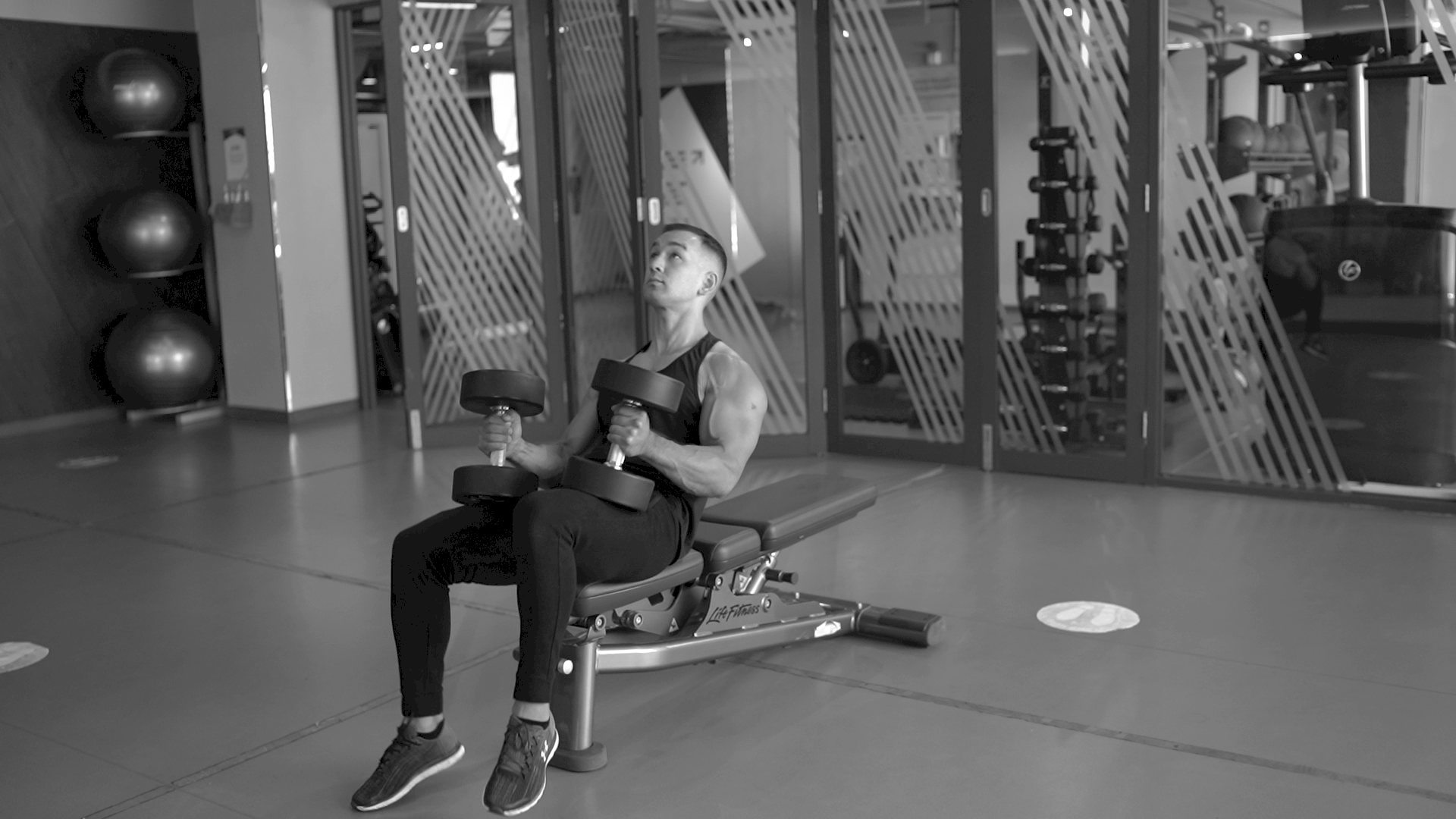
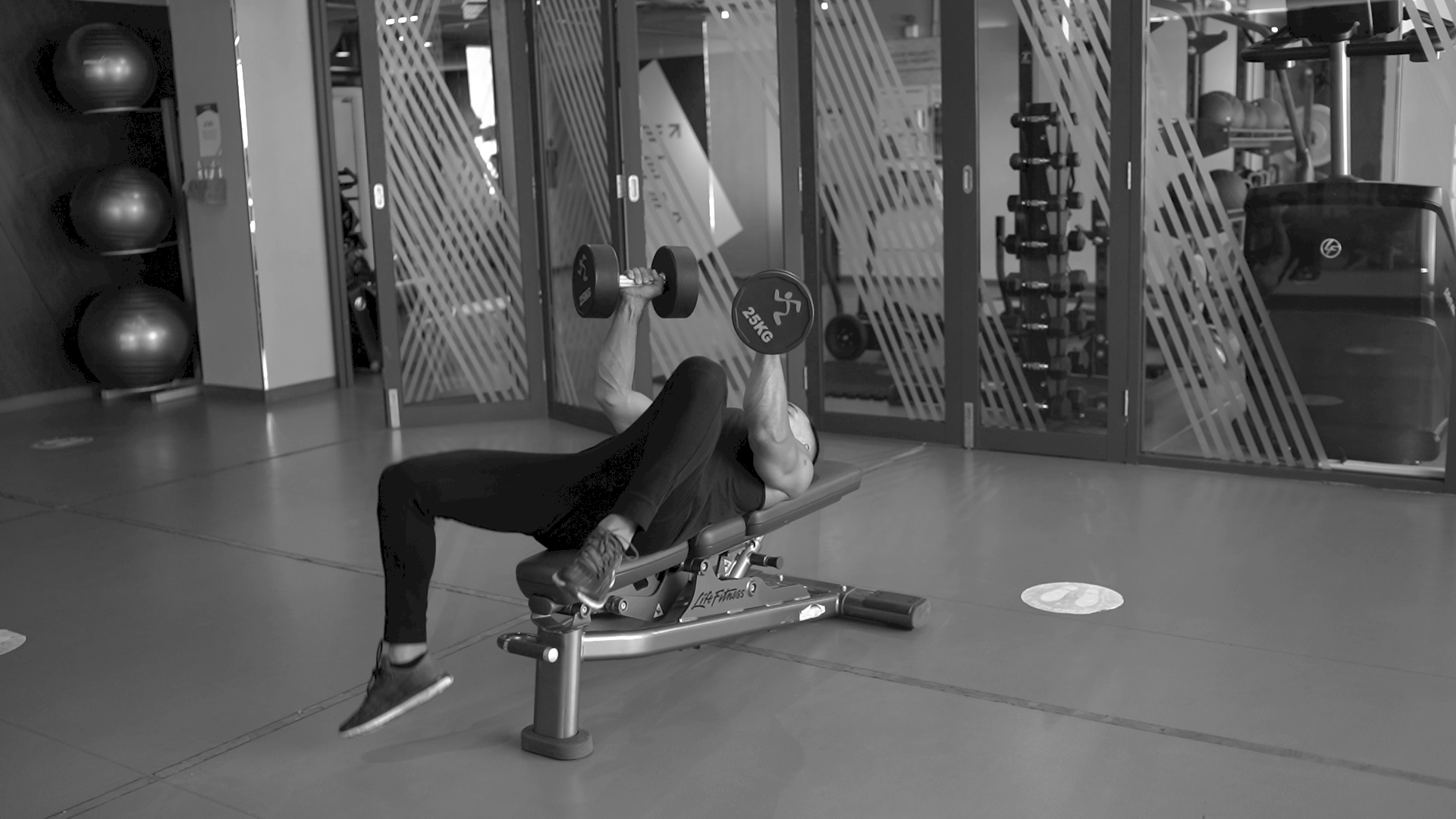
For starters, this is potentially an injury risk because you’re pressing the dumbbells above your head from an unstable position.
When you do this, you’re also bleeding out a bit of strength on that first sort of “rep” that isn’t actually a rep.
What you want to do instead is kick the dumbbells back and start the exercise with the weight in the bottom position.

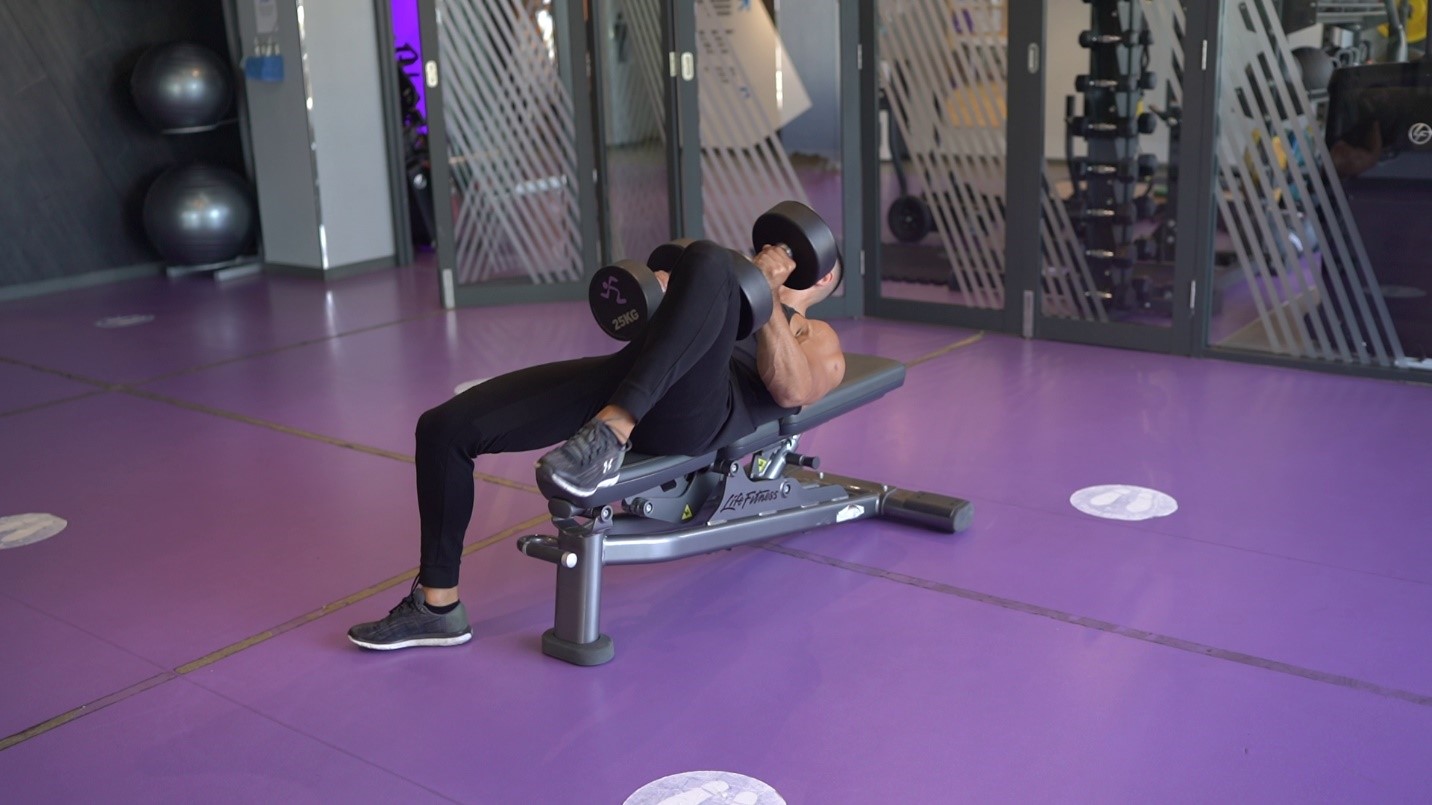
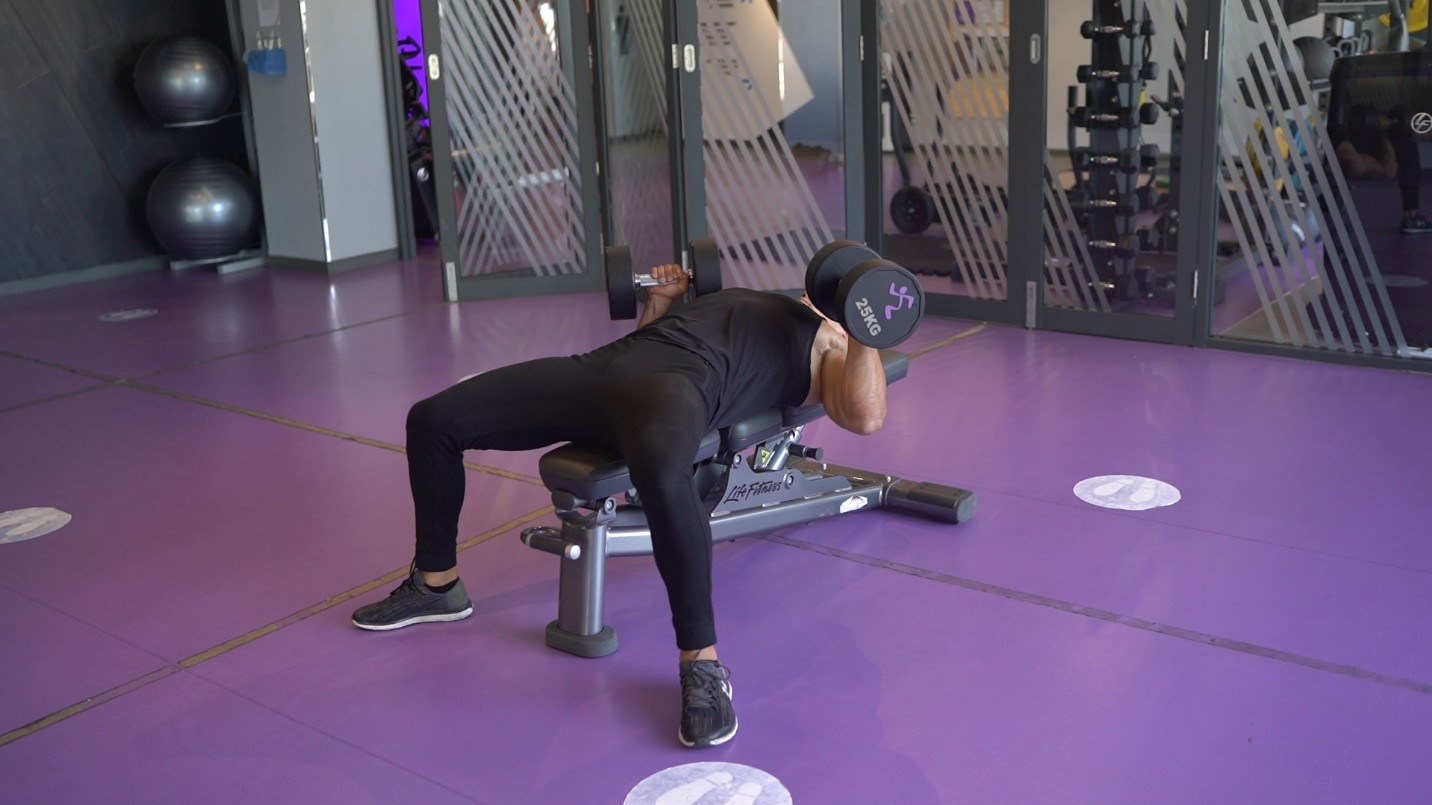
Make sure everything is lined up, gather your strength, and then perform your first full rep from that position.
This way, you won’t be wasting energy trying to lie back on the bench while pressing the dumbbells up at the same time. There’s also less of a chance of the dumbbells accidentally falling onto your face.
Mistake #2: Putting your feet on the bench
The second mistake is a really simple one to fix.
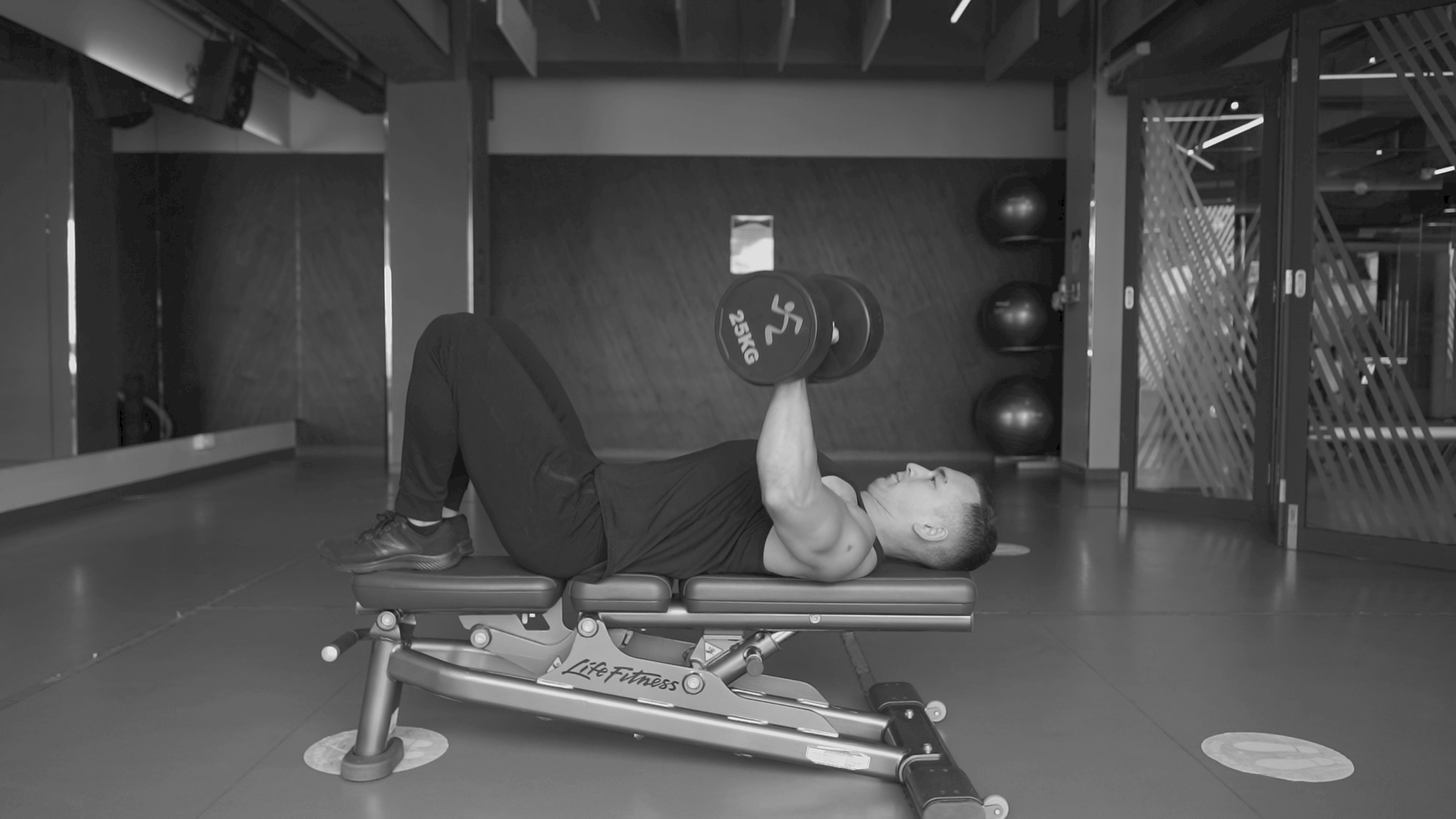
Putting your feet up on the bench doesn’t give you any specific muscle building advantage. Really, all it does is put you into a less stable position.
If you’re lifting lighter weights, then it’s probably not going to be a big deal. But if you’re lifting a bit heavier, and if you’re training within a few reps of failure like you should be doing (which is something I’ve covered in my 5 muscle building mistakes article), then you want to keep your feet on the ground.

This gives you a nice stable position to press from so your form doesn’t break down.
Mistake #3: Flaring your elbows
Now moving into the actual dumbbell press form itself.
The fourth mistake is flaring your elbows right out to your sides at a 90 degree angle. Even worse is having your upper arms pushed back past 90 degrees. (I’d say most average trainees tend to do their dumbbell presses in this way.)
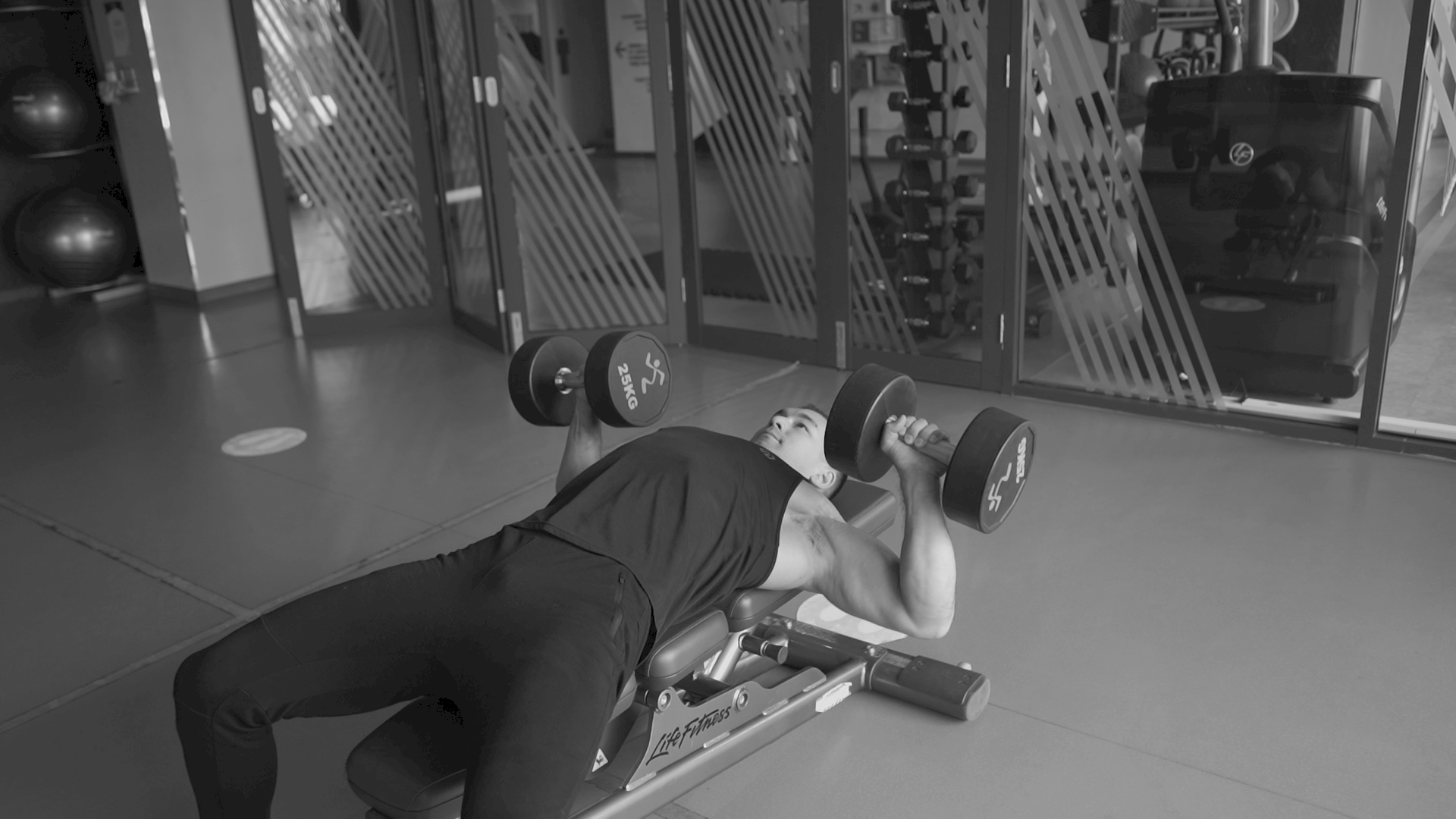
Now for some people, this can be totally fine. I’m not saying it’s a bad thing in every single case that will automatically cause your shoulders to crumble and fall apart overnight.
But to optimize the line of pull on the pecs and to minimize stress on the shoulder joints, you ideally want to have those elbows tucked in slightly. It will also help you lessen bench press shoulder pain.

The exact position will vary from person to person, but around 75 degrees will work well for most.
If you’re used to doing your presses with your elbows flared, then this might feel a bit awkward at first. Yet you should quickly get the hang of it, and it’ll probably serve you better in the long run.
Mistake #4: Hands and/or elbows not stacked
The 4th dumbbell pressing mistake is having your hands positioned either inside of your elbows like you see below…
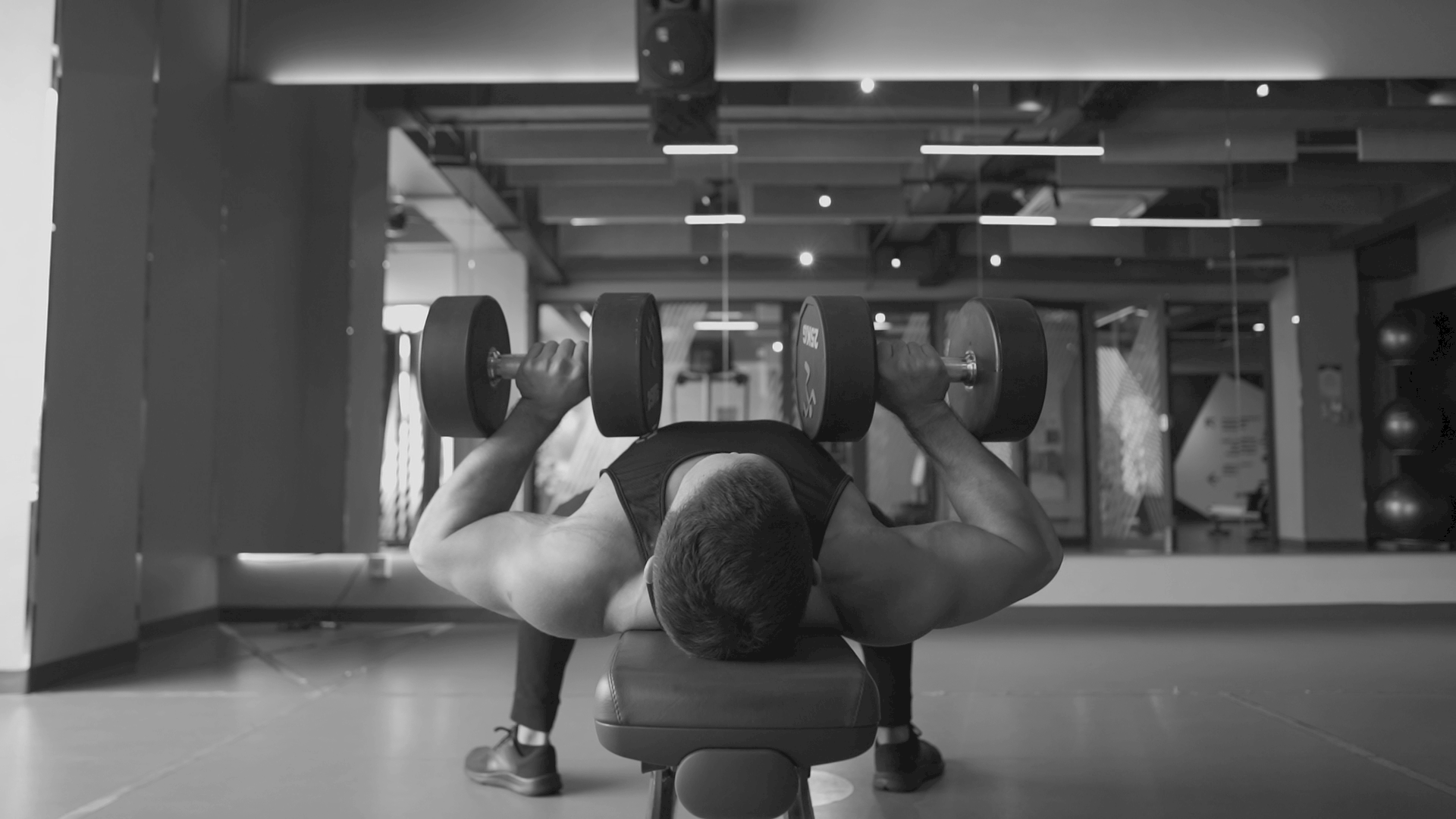
…or having them positioned really far outside of your elbows.
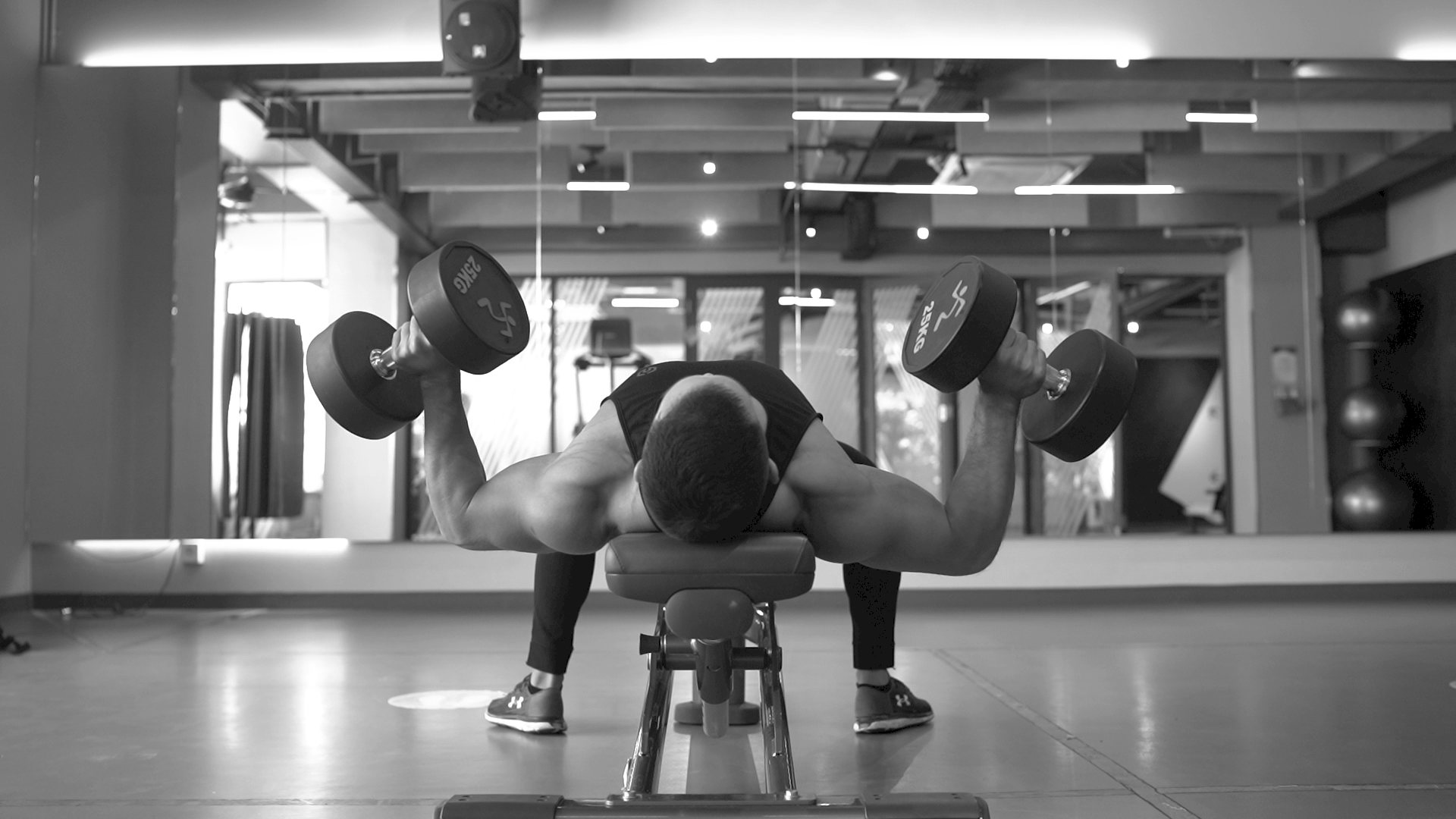
What you want to do instead is to have your hands and elbows stacked on top of each other like you see here.
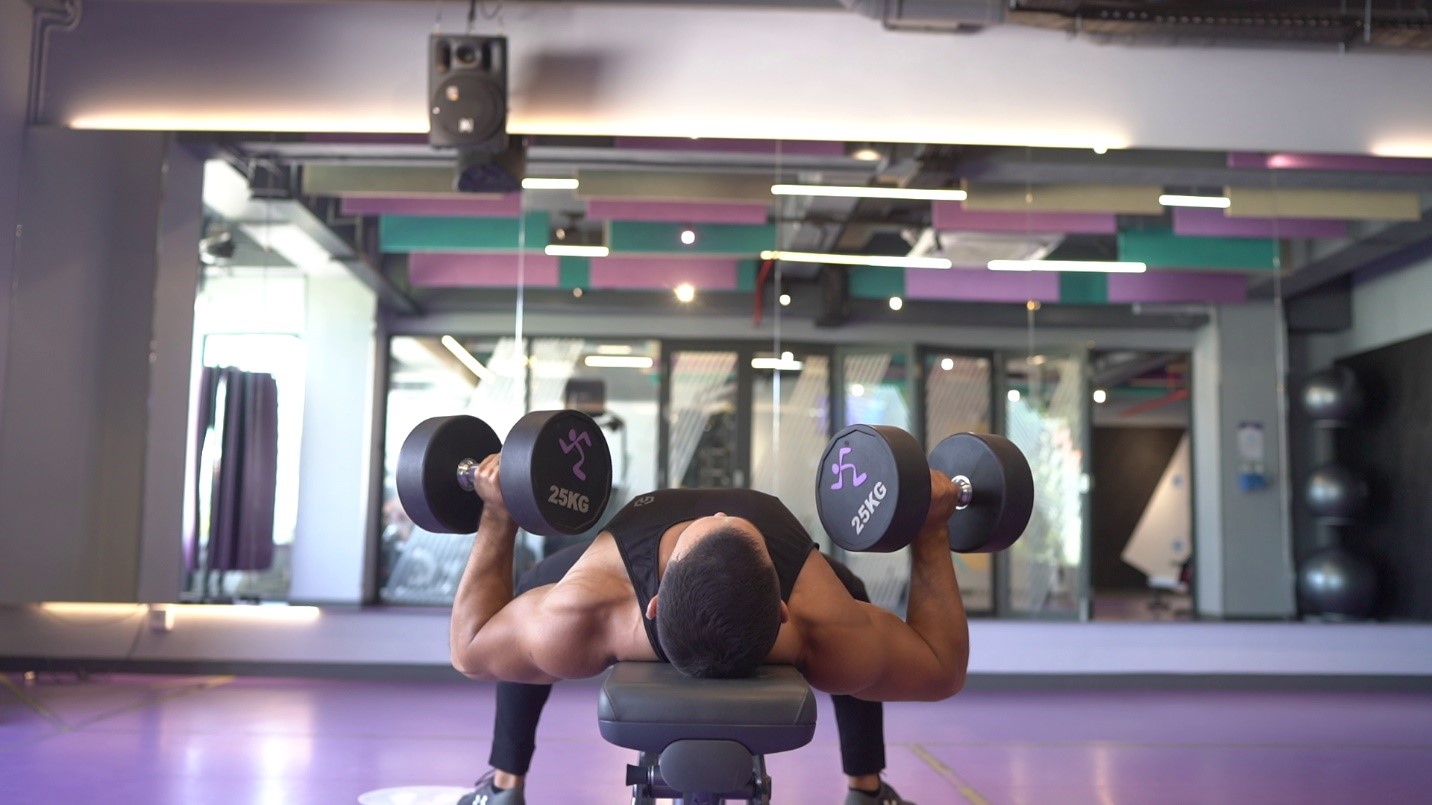
It might not be 100% perfect, and is perfectly fine if it’s an inch inside or outside. But, it should be fairly close.
If your hands are inside, then that’ll put excessive stress on your elbows. If they’re outside, then you’ll lose pressing strength and it can stress the shoulder joints as well.
Of course, if you’re doing a dumbbell fly with lighter weights and a neutral grip, then having the hands outside of the elbows would be standard form.
When it comes to a dumbbell press, however, you want the hands and elbows stacked. One thing you can do to make sure of this is to actually film yourself from behind the bench so you can see exactly what your form looks like.
Mistake #5: Pressing diagonally
The 5th mistake is pressing the weight in a diagonal forward path, as seen below.
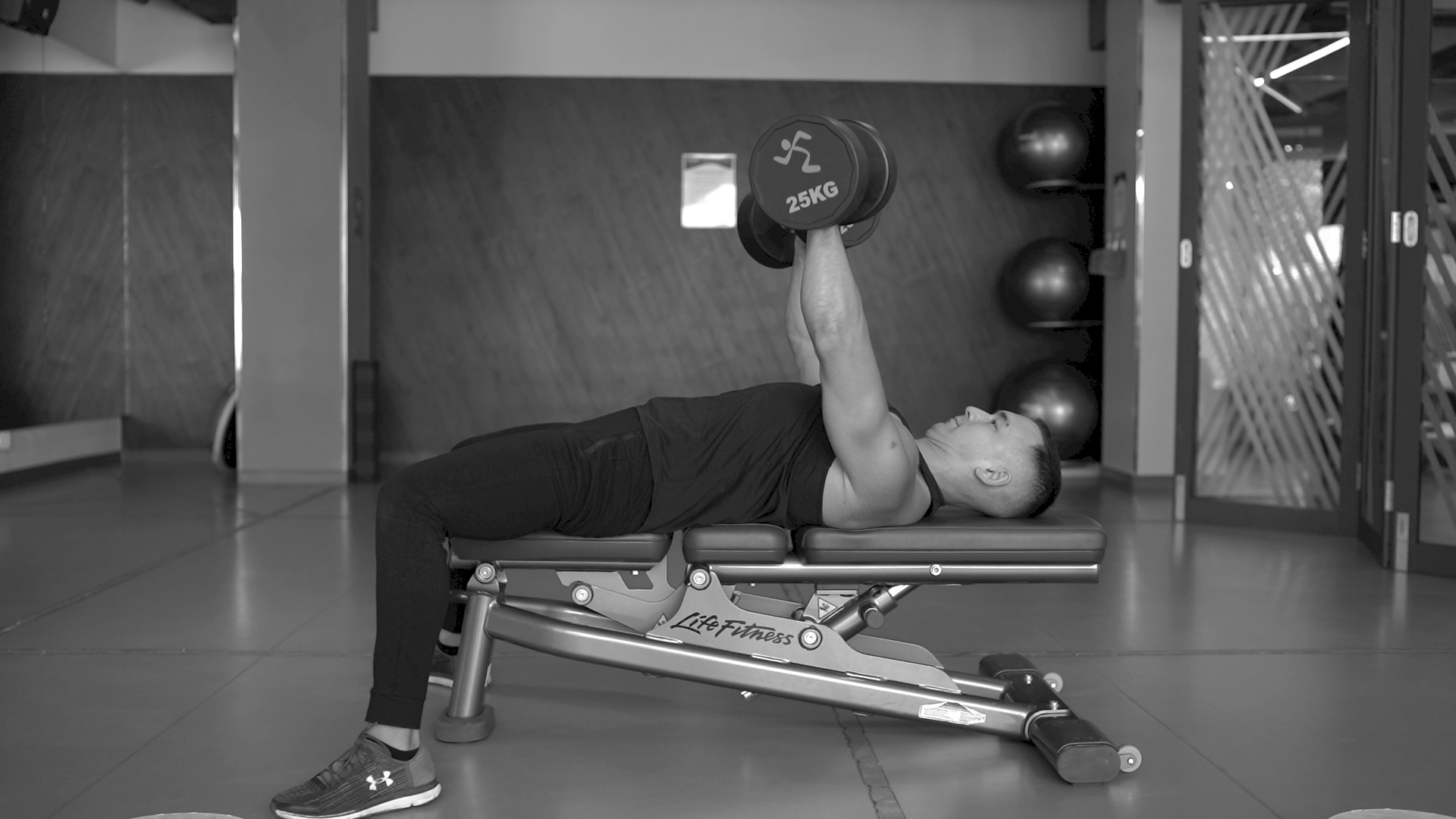
This is something I commonly see in the gym, and most people don’t even realize they’re doing it. Ultimately though, it’s going to cause you to lose pressing strength. This is due to the fact that it takes tension off the pecs and directs more of it onto the front delts.
Instead, you want to be pressing those dumbbells in more or less a straight upward line.

Since your elbows should be tucked forward anyway, it’s going to angle back slightly. The point is to press in a way so that you’re generating maximum upward force against the weight and not allowing the dumbbells to drift forward.
Again, this is something where taking a quick video of yourself can be helpful.
Mistake #6: Not using a full range of motion
When it comes to dumbbell press form, a very basic mistake but very common one to see is not using a full range of motion.
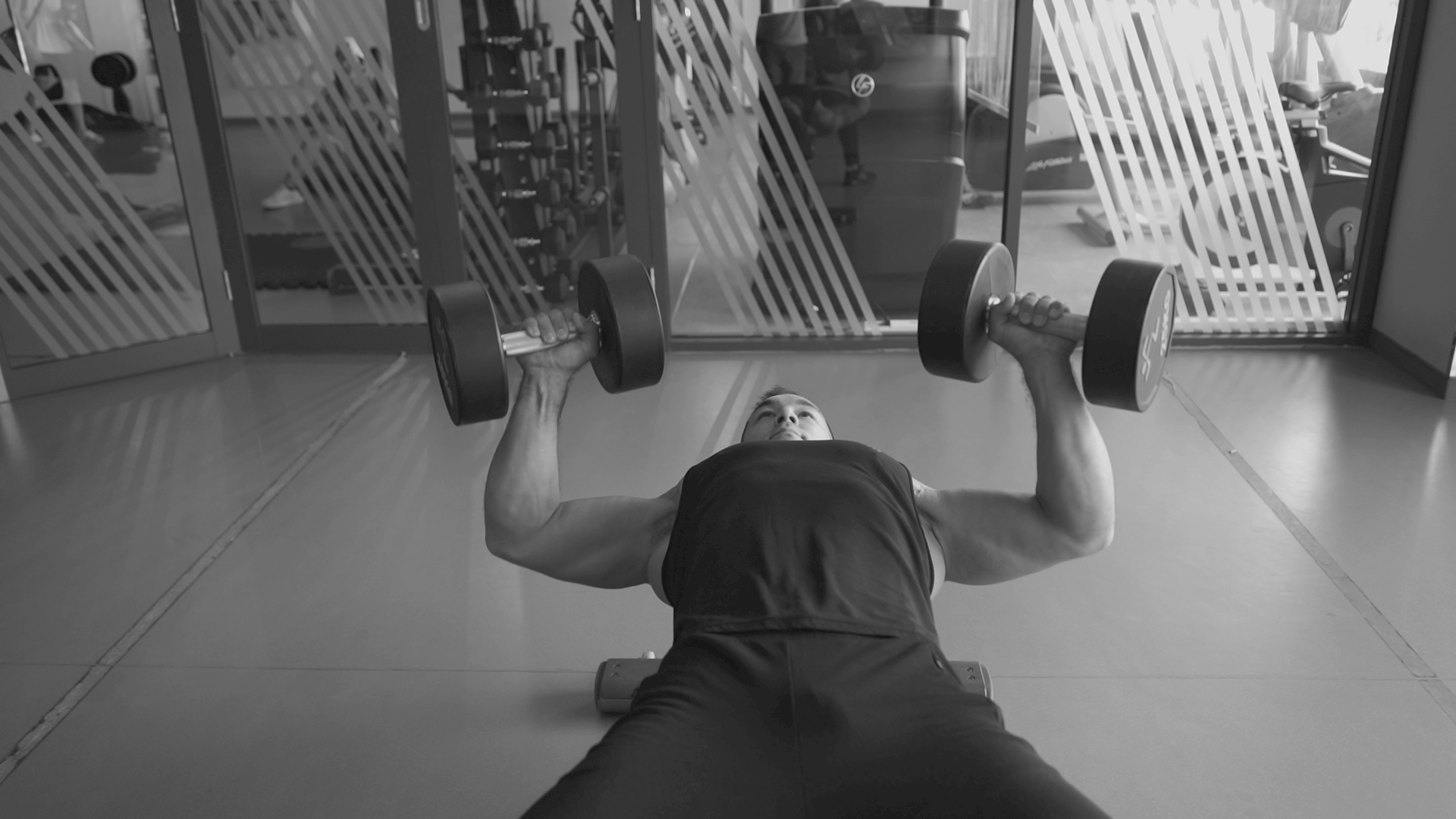
A lot of people I see at the gym just grab the weights and pump out a bunch of sad, half-reps. They do this by only performing the top half of the movement, or sometimes going the constant tension route and just performing the bottom half.
If you want to maximize chest stimulation and growth, then you want to use the largest range of motion you comfortably can.

You should ideally be bringing the dumbbells all the way down to chest level, or at least as close as you can get them. Then, press them all the way up.
If you’re only doing the top half of the movement, then you’re going to be working a lot more triceps. If you’re only doing the bottom half, then you will be hitting your chest but not to its full potential.
The research is pretty clear that for maximum hypertrophy, larger ranges of motion are superior.
Of course, you’re not going to be able to lift quite as much weight this way in comparison to partial reps, which is totally fine. The goal here is to place the pecs under as much tension as possible. Using a slightly lighter weight and bringing the dumbbells all the way down can accomplish this.
Mistake #7: Uncontrolled negative (eccentric)
Lastly, mistake number 7 on the list is not controlling the negative.
I’m not saying you need to perform super slow negatives. Also, there is debate in terms of how the eccentric specifically contributes to muscle growth.
However, I would definitely consider it suboptimal for most people to just press the dumbbells up and then let them drop back down with gravity.
A lot of people tend to do this on dumbbell presses. Letting the dumbbells just crash into the bottom position with no control increases the stress on your joints. It also increases the chances of a sudden form slip-up as well.
There isn’t an exact cadence you have to follow, but try to lower the weight deliberately and under control with some active resistance on the way down. If you’re truly controlling the eccentric, then it probably shouldn’t be done in less than 1 and a half to 2 seconds in most cases.
You can even go slower if you’d like. I myself have always preferred slower negatives in my own training because it just feels better for me.
Summary
If you want to maximize your chest gains with the dumbbell press, then here are the 7 form mistakes you should avoid:
- Setting up the exercise with the dumbbells above your head
- Putting your feet on the bench while performing the movement
- Flaring your elbows while pressing
- Not stacking your hands and/or elbows
- Pressing the weight in a diagonal forward path
- Not using a full range of motion
- Not controlling the negative, eccentric part of the movement
Try incorporating some of these tips the next time you train your chest with the dumbbell press, and see the results for yourself.
If you found this article helpful, make sure to sign up for your FREE custom fitness plan below...




